Finasteride for hair regrowth has taken the world by storm. It is a prescription drug used in small doses to treat androgenic alopecia (1). Androgenic alopecia is a common cause of hair loss in men and women. It affects about 50 million men and 30 million women in the US (2). Many factors cause hair loss – genetics, diet, stress, hormones, etc. Finasteride has shown promising results in combating hair loss. But, is it safe? What are the side effects? Read on to get all the answers along with scientific data. Scroll down!
In This Article
What Is Finasteride And How Does It Work?
Finasteride is an FDA-approved prescription drug used for treating androgenic alopecia. It works by inhibiting the conversion of testosterone, the male sex hormone, to dihydrotestosterone (DHT) (3). High levels of DHT shrink the hair follicles and shorten the hair cell growth cycle, making hair prone to falling (4). The drug may help reduce the risk of female pattern hair loss in women and male pattern hair loss in men.
But is this mechanism backed by any scientific evidence? Read on to know what research has to say about finasteride as a treatment for hair loss.
What Does Research Say About Finasteride For Hair Loss?
Finasteride, in laboratory experiments, has shown to reduce male pattern baldness (‘M-shaped’ balding) in men and female pattern baldness (thinning of hair throughout the scalp) in women. Let us have a quick glance at those studies.
Japanese scientists tested the effect of 1 mg Finasteride on 2,561 Japanese men with androgenic alopecia (male pattern baldness). Hair count increased greatly in 11% men, moderately in 36.5% men, and slightly in 39.5% men. Also, the response rate had improved with an increase in the treatment duration (5).
Another study by American scientists found that 1 mg/day of finasteride slowed hair loss and boosted hair growth in men over a 2-year treatment period (6). A review paper in the Journal of Drugs in Dermatology observed that topical application of finasteride decreased plasma DHT in men and women (7).
Sixty-five men with androgenic alopecia were treated with a combination of finasteride 1 mg/day and topical application of 5% Minoxidil. Both the medications could treat mild to severe male pattern baldness (8).
Excessive testosterone production in some women may lead to irregular periods, hirsutism (hair on the face, chest, and back), and androgenic alopecia (9). Finasteride is not effective and possibly dangerous for women of childbearing age. However, a 67-year-old lady without hyperandrogenism (excess body testosterone) showed significant hair growth when treated with finasteride 5 mg for a year (10).
In another study, 37 pre-menopausal women were administered with 2.5 mg finasteride and an oral contraceptive. 62% of the patients showed a reduction in hair loss. Finasteride 5 mg/day administered to 87 pre-menopausal women for a year showed increased hair thickness and density in a separate study (11).
Finasteride, alone or with minoxidil, is an effective drug for treating male pattern baldness. However, more studies on women with larger sample sizes are warranted (considering their menopausal and hyperandrogenism status). But at what optimal dose does finasteride work? Keep reading to find out.
Finasteride Dose To Reduce Hair Loss
1 mg of finasteride is the prescribed dose for androgenic alopecia or hair fall in men and women. Clinical studies have also shown that 1 mg of finasteride per day can promote hair growth and prevent further hair loss in men (12). But how long should you take finasteride to see results? Find out in the next segment.
How Long Does It Take To Work?
According to the studies mentioned above, finasteride may take a year or two to show significant results. Talk to your doctor to chart out a treatment course that is most beneficial for you. Here are a few before-and-after pictures of results from finasteride treatment.
Finasteride Hair Growth Results
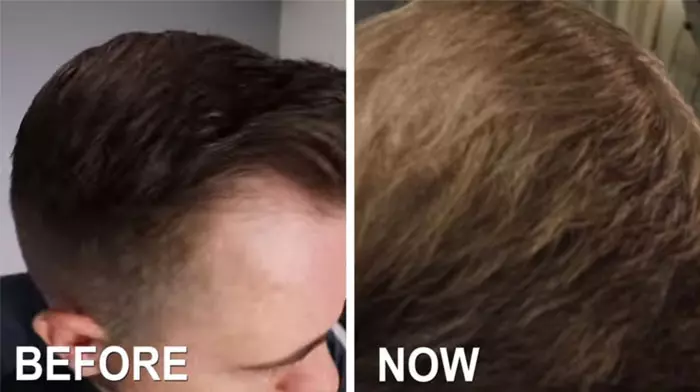
Youtube
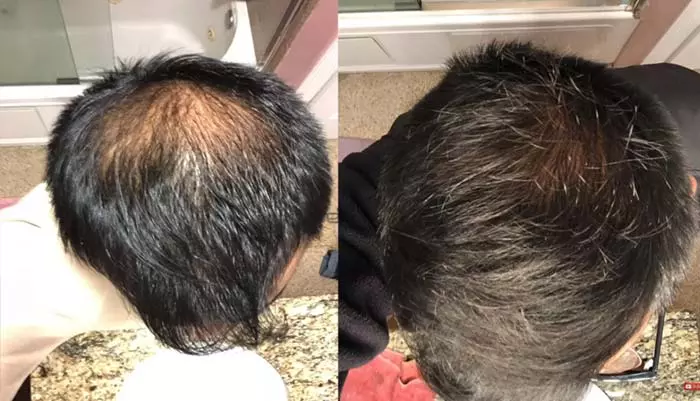
Youtube

Youtube
While low doses of finasteride may help with hair regrowth and improve hair density, the drug does come with its set of side effects. We have discussed the same in the following section.
Side Effects Of Finasteride
Here are a few side effects finasteride may cause (3), (13), (14):
- Erectile dysfunction.
- Decreased libido.
- Gynecomastia, or swelling of breast tissues in men.
- Orthostatic hypotension, or low blood pressure as one stands up.
- External genital deformity in male offspring.
Note: The side effects may continue despite the discontinuation of the therapy (also called post-finasteride syndrome) (3).
Can Women Take Finasteride?
Women of childbearing age should avoid taking finasteride as it increases the risk of external genital deformity in male offspring (15). Pre-menopausal and/or post-menopausal women can go for doctor-prescribed finasteride for reducing androgenic alopecia, only if other treatment options are not effective.
Hair loss is a common hair issue faced by all people of all genders. It affects your self-esteem and social life. One of the treatments recommended to manage and reduce hair loss is finasteride. While you can use finasteride for hair regrowth, there are some side effects that it may cause.
Lactating and pregnant women should steer clear of this drug. They can try the PRP treatment instead, which shows results in 6 months to a year. To promote healthy hair growth naturally, you should focus on eating healthy, exercising daily, sleeping well, and stress relief. Following a regular hair care regimen with steps like oiling your hair can promote hair growth.
Since it has adverse effects, you can try other natural alternatives that are healthier and safer. These alternatives work effectively without causing side effects. These natural ingredients contain anti-androgenic properties that can reduce hair loss. But, you should use these anti DHT-blends with caution.
Key Takeaways
- Finasteride is an FDA-approved medication used for treating androgenic alopecia in men and women.
- Studies indicate that taking 1mg of finasteride daily slows down hair fall and stimulates hair growth.
- Women of reproductive age should avoid taking finasteride as it may increase the risk of external genital deformity in male children.
Frequently Asked Questions
Does finasteride work for hair loss?
Yes, Finasteride 1 mg works for reducing hair loss in men.
How to get finasteride for hair loss?
Finasteride is a prescription drug. You will get it in any pharmacy if you have a licensed dermatologist-prescribed dosage for finasteride.
Can finasteride cause hair loss?
Subscribe
No, finasteride will not cause hair loss. In fact, it reduces hair loss by blocking the conversion of testosterone to dihydrotestosterone (DHT).
How much does finasteride 1 mg cost?
30 tablets of finasteride 1 mg cost $80.99.
How to reduce the side effects of finasteride?
Exercising regularly and eating healthy may help reduce the side effects of finasteride. However, more research is warranted in this regard.
Can women use finasteride?
Pregnant women of childbearing age should not take finasteride. It causes genital deformity in the male fetus. Certain studies state that finasteride may reduce hair loss in women. However, this does not mean the drug is safe for women. Talk to your doctor and check the best options available. If no other treatments work, your doctor may prescribe a small dosage of finasteride.
What happens if a female touches finasteride?
It is highly unlikely that finasteride is absorbed through the skin through handling. It may not cause fetal exposure or harm this way (16). However, consult your doctor in this regard.
Is finasteride used for female hirsutism?
In a laboratory test, finasteride had shown to be an effective treatment for hirsutism in women with polycystic ovary syndrome (17). However, it has to be prescribed by a licensed physician.
Is there a link between finasteride and breast cancer?
Finasteride may be linked to breast cancer in women. However, more research studies are warranted in this regard.
Sources
Articles on StyleCraze are backed by verified information from peer-reviewed and academic research papers, reputed organizations, research institutions, and medical associations to ensure accuracy and relevance. Check out our editorial policy for further details.
- Androgenetic alopecia.
https://medlineplus.gov/genetics/condition/androgenetic-alopecia/#frequency - Guidelines on the use of finasteride in androgenetic alopecia.
https://pubmed.ncbi.nlm.nih.gov/26924401/ - Finasteride
https://www.ncbi.nlm.nih.gov/books/NBK513329/ - Evaluation of efficacy and safety of finasteride 1 mg in 3177 Japanese men with androgenetic alopecia.
https://pubmed.ncbi.nlm.nih.gov/21980923/ - Androgenetic Alopecia in Women.
https://www.sciencedirect.com/science/article/pii/S0022202X15529369#:~:text=Androgenetic%20alopecia%20(AGA)%2C%20also,the%20same%20as%20in%20men. - Finasteride in the treatment of men with androgenetic alopecia. Finasteride Male Pattern Hair Loss Study Group.
https://pubmed.ncbi.nlm.nih.gov/9777765/ - A Systematic Review of Topical Finasteride in the Treatment of Androgenetic Alopecia in Men and Women.
https://www.ncbi.nlm.nih.gov/pmc/articles/PMC6609098/ - An open, randomized, comparative study of oral finasteride and 5% topical minoxidil in male androgenetic alopecia.
https://pubmed.ncbi.nlm.nih.gov/15316165/ - Alopecia in Women.
https://www.aafp.org/afp/2003/0301/p1007.html - Finasteride for Hair Loss in Women.
http://www.dpic.org/article/professional/finasteride-hair-loss-women - Hormonal therapy in female pattern hair loss.
https://www.ncbi.nlm.nih.gov/pmc/articles/PMC5419033/#:~:text=However%2C%20one%20study%20of%2037,et%20al.%2C%202006). - Finasteride: a review of its use in male pattern hair loss.
https://pubmed.ncbi.nlm.nih.gov/9951956/ - Controversies in the treatment of androgenetic alopecia: The history of finasteride.
https://pubmed.ncbi.nlm.nih.gov/30253001/ - Finasteride: a review of its use in male pattern hair loss.
https://pubmed.ncbi.nlm.nih.gov/9951956/ - Finasteride and Its Potential for the Treatment of Female Pattern Hair Loss: Evidence to Date.
https://www.ncbi.nlm.nih.gov/pmc/articles/PMC7060023/ - Finasteride: Does it affect spermatogenesis and pregnancy?
https://www.ncbi.nlm.nih.gov/pmc/articles/PMC2018472/pdf/11785276.pdf - The benefits of finasteride for hirsute women with polycystic ovary syndrome or idiopathic hirsutism.
https://pubmed.ncbi.nlm.nih.gov/12724020/
Related
The following two tabs change content below.
- Author
- Reviewer

Arshiya Syeda
Arshiya Syeda is an editor at StyleCraze. Prior to that, she was a content writer and combined her writing and… more
Dr. Rekha Yadav
(BHMS)Dr. Rekha Yadav is a certified trichologist from the International Association of Trichologists, Australia. She established her hair and scalp… more



 How To Use Jamaican Black Castor Oil For Hair Growth
How To Use Jamaican Black Castor Oil For Hair Growth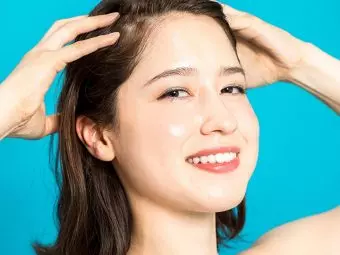 How To Exfoliate Your Scalp At Home To Clear Excess Oil
How To Exfoliate Your Scalp At Home To Clear Excess Oil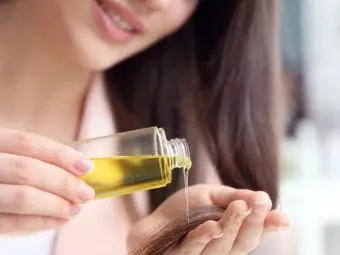 How To Apply Oil On Hair: A Step-By-Step Guide
How To Apply Oil On Hair: A Step-By-Step Guide How To Use Coconut Oil For Dry Scalp And Dandruff
How To Use Coconut Oil For Dry Scalp And Dandruff Easy Way To Get The Perfect Twist Out On 4C Natural Hair
Easy Way To Get The Perfect Twist Out On 4C Natural Hair Eyebrow Hair Loss: Causes, Prevention Tips, & DIY Methods
Eyebrow Hair Loss: Causes, Prevention Tips, & DIY Methods Types Of Hair Loss, Causes, Treatments, & Prevention Options
Types Of Hair Loss, Causes, Treatments, & Prevention Options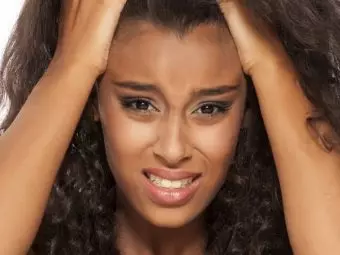 Itchy Scalp And Hair Loss: How To Treat And How To Prevent It
Itchy Scalp And Hair Loss: How To Treat And How To Prevent It What Is Hair Texturizing? How To Take Care Of Texturized Hair?
What Is Hair Texturizing? How To Take Care Of Texturized Hair?